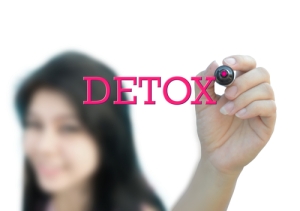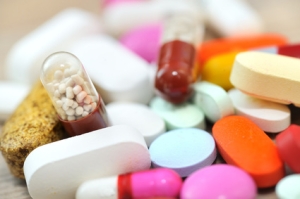Many recovering addicts and their families ask what is the success rate of medical detoxification. Treatment centers are reluctant to publish medical detox success rates because of patient confidentiality concerns. According to the authors of “Essentials of Clinical Psychopharmacology,” (2013, 3rd ed.), medical detox success rates depend upon the substance-related addiction from which the addict is recovering, and where the medical detox treatment is administered. A recap of medical detox success includes:
Opioid
“Heroinism’s” long history of pharmacotherapy and varying success rates. Recent abuse of opioid derivatives has outpaced heroin use. Most medical detox therapies rely upon “short-term” substitution of another narcotic for the addictive substance. Methadone is often used for this purpose in treating opioid addiction as it successfully suppresses opioid withdrawal symptoms resulting from opioid abstinence. Methadone administration continues for one to six months. Recent therapeutic options include the use of a partial agonist (often buprenorphine) to manage withdrawal. The medical detox treatment helps stabilize the patient so that treatment continues in a drug-free environment. Medical detox research understands that total ‘cold-turkey’ abstinence or placebo methods place the recovering addict at grave risk.
Treatment Programs and Success Rates of Opioid Withdrawal
Abstinence percentages of research studies following opiodic withdrawal management and medical detox progams report lower than average success, approximately 10 to 19 percent. Recent research following inpatient treatment with clonidine show astounding success rates of 80 to 90 percent, according to authors Alan F. Schatzberg, M.D. and Charles B. Nemeroff, M.D., Ph.D. Comparative outpatient treatment with clonidine has been less successful, with rates of about 31 to 36 percent published for recovering heroin addicts treated as outpatients. Researchers theorize that the reason for lower outpatient success rates has to do with continuing availability of opioids. According to Mayo Clinic, not all patients can tolerate clonidine. Risks of clonidine treatment include:
- chest pain and discomfort
- irregular heartbeat/pulse; tachycardia
- pounding/slow heartbeat
For those reasons, alpha-adrenergic agonists such as guanfacine, lofexidine and guanabenz have been studied as detox medicines. These drugs appear to have fewer cardiovascular risks associated with medical detox treatment.
Other Regimens for Opioid Medical Detox
Naltrexone has been studied as a potentially competitive agonist (added to clonidine) regimen with the goal of hastening relief of withdrawal symptoms while blocking the impact of any continuing opioids taken by the addict. Research studies following treatment progress with naltrexone show high success rates of 82 percent as patients completed detox in five days or less with one daily does of clonidine combined with 12.5 mg of naltrexone.
Rapid Medical Detox for Opioid Addiction has Been Studied
According to the authors, patients were first anesthetized (methohexital or midazolam) and then given naltrexone to accelerate the abstinence passage. Some patients successfully completed medical detoxification in approximately 48 hours. However, the patients required other medical interventions, including intubation; i.v. fluids; or mechanical ventilating) because they bore the risks of general anesthesia. According to studies of Collins et al (2005), patients phased through rapid detox strategies using anesthetics fared no better than addicts submitting to longer-term medical detox strategies.
Drug Addiction Treatment Act of 2000
According to DATA 2000, treatment allowed for opioid dependence treatment, doctors may treat recovering addicts as outpatients or in a residential treatment center. Medicines used must be FDA approved. The treating physician must be a uniquely qualified, having a U.S. DEA license to prescribe medical detox therapies to patients under the law.



 An addiction to drugs or alcohol represents a habit that is almost impossible to break without help, and for many years individuals who have been addicted have been heading to rehabilitation facilities to help get into a state of recovery. In recent years, there has also been an emergence of
An addiction to drugs or alcohol represents a habit that is almost impossible to break without help, and for many years individuals who have been addicted have been heading to rehabilitation facilities to help get into a state of recovery. In recent years, there has also been an emergence of 

 Drug addiction is complex. There are both mental and physical factors at work. Twenty-three million people suffer from addiction, but only around 10 percent get medically supervised treatment. Serious addiction requires medical intervention prior to rehabilitation with drug therapy to manage the withdrawal symptoms. Without this treatment protocol, certain addicts will be unable to handle the side effects. In some cases, cold turkey withdrawal can be life threatening.
Drug addiction is complex. There are both mental and physical factors at work. Twenty-three million people suffer from addiction, but only around 10 percent get medically supervised treatment. Serious addiction requires medical intervention prior to rehabilitation with drug therapy to manage the withdrawal symptoms. Without this treatment protocol, certain addicts will be unable to handle the side effects. In some cases, cold turkey withdrawal can be life threatening.

 simple indications that your body is fighting the drugs or alcohol which you are taking. If you keep taking the drugs or alcohol on a continuous basis, you may become addicted if you are not already. A sure sign of addiction is a person suffering from withdrawal symptoms when they try to stop taking the drug.
simple indications that your body is fighting the drugs or alcohol which you are taking. If you keep taking the drugs or alcohol on a continuous basis, you may become addicted if you are not already. A sure sign of addiction is a person suffering from withdrawal symptoms when they try to stop taking the drug.